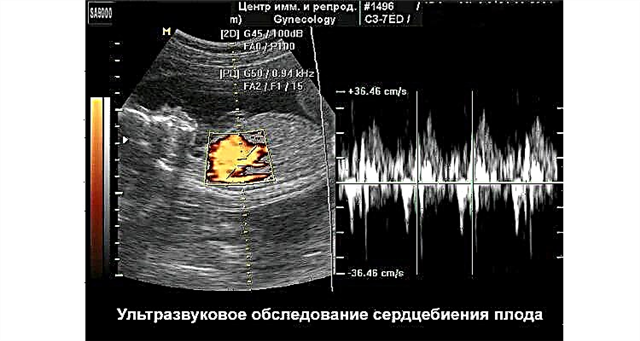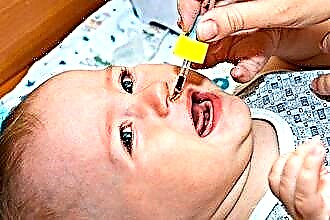Since the most effective treatment is directed against the cause of the disease, then in order to decide what to do when a child's ear hurts, it is necessary to understand the mechanism of development of this pathological condition.

The reasons for the development of pain in the ear can be
- injury;
- neurological diseases;
- inflammation of regional lymph nodes;
- inflammation of the salivary gland;
- tumor processes, etc.
In the overwhelming majority of cases, ear pain in a child is associated with the development of an inflammatory process in him. The most common cause of ear pain is otitis media, although this pathology is rarely an independent disease. Most often, ear inflammation is a consequence of a complication of ARVI - another pathology of the ENT organs, proceeding with a violation of the patency of the Eustachian tube.
Treatment principles
The presence of edema of the auditory tube caused by inflammation, as well as the throwing of mucus and pathogenic microbes from the auditory tube into the tympanic cavity lead to the development of a similar process in the middle ear. At the same time, the pressure in the middle ear cavity decreases, the mucous membrane begins to produce exudate. All this leads to the fact that the functional abilities of the ear suffer, sound conduction is disturbed, and a pronounced pain syndrome develops.
How to relieve ear pain in a child? For effective treatment of otitis media, it is first of all necessary to carry out measures aimed at reducing edema and improving the drainage function of the auditory tube. This will help to avoid the development of stagnation in the tympanic cavity and the throwing of pathogenic microorganisms into the middle ear cavity. Therefore, these activities can help relieve your child's ear pain.
Among the drugs that affect the reduction of swelling of the nasopharyngeal mucosa, the most effective are vasoconstrictor nasal drops. They selectively act on the vessels of the nasal mucosa, in addition, they have a fast action. Sanorin, Galazolin, Naphtizin in appropriate dosages can be used even in infants. However, when using them, it is necessary to remember about the possible development of addiction, and therefore, the duration of the use of these drugs should not exceed 5-7 days.
With the development of otitis media, the child may complain of pain in one or both ears, noise, hearing loss. In this case, there may be an increase in body temperature up to 39 degrees. The pain syndrome can be so intense that the child cries out in pain. The use of drugs with a sufficient analgesic effect is an important direction in providing first aid to such patients.
There is a wide range of ear drops, many of which are pain relieving. However, it is not recommended to use drops in the ear before consulting an otolaryngologist. This is due to the presence in the composition of many of them of chemical compounds that have an ototoxic effect. If there is a perforation of the tympanic membrane, the use of these agents can have a damaging effect on the bones of the tympanic cavity or even the auditory nerve, leading to permanent hearing loss.
If the eardrum is intact, such remedies can be most effective.
The task of the parents and the pediatrician is to ensure that the patient is examined by an otolaryngologist as soon as possible, and, if necessary, an otoscopy is performed.
It is up to a specialist to decide what to do if a child has a sore ear. If the otolaryngologist considers that the use of ear drops in this case will be effective and safe, they will be prescribed. Their analgesic effect can be very significant, since many ear drops contain both local anesthetics and non-steroidal anti-inflammatory drugs that have a pronounced analgesic effect.
Paracetamol use
What if the child is 3 years old and has a sore ear? In this case, parents can give an analgesic agent by mouth.
The safest and most effective drug used for otitis media is paracetamol.
It is he who is recommended for use from a very early age by the World Health Organization. The existing form of release in the form of tablets, capsules, syrup, suppositories, allows its use in children of any age. In addition to the pronounced analgesic, this drug has antipyretic and anti-inflammatory effects, which is also important in this pathology.
To reduce pain, it is also necessary to immobilize the affected ear. Any touching the auricle or vibrations in the air contribute to an increase in pain. To reduce this negative effect, it is recommended to close the external auditory canal with a cotton turunda or wear a hat.
touching the auricle or vibrations in the air contribute to an increase in pain. To reduce this negative effect, it is recommended to close the external auditory canal with a cotton turunda or wear a hat.
Choice of treatment method
In most cases, otitis media is not a serious illness, and recovery can occur on its own. However, 10% of the population, and especially children, are faced with acute purulent otitis media, the complications of which can be very dangerous. What to do if a child has ear pain depends on the form of the disease. With catarrhal otitis media, the use of nasal vasoconstrictors and ear drops with an antiseptic and anti-inflammatory component may be quite sufficient.
With purulent inflammation, antibiotics are required.
Treatment of the child's ear in this case may require both the appointment of antibacterial tablets as tablets and their use in the form of ear drops. After examining and clarifying the diagnosis, the specialist decides how to treat a sore ear in a child 5 years old and older.
While maintaining the integrity of the tympanic membrane, the use of ear drops is indicated. The most popular are boric alcohol, Otipax, Otinum, Sofradeks. However, combined agents should also be used under the direct supervision of a specialist, since they may contain local anesthetics, which are powerful allergens, in their composition.
Physiotherapeutic procedures, especially warming ones, are very popular in adults in the initial stage of the disease.
In children, physiotherapy is contraindicated until the patient reaches the age of five.
This is due to their insufficient immunity and thermoregulation. In addition, the development of purulent otitis media is an absolute contraindication for these procedures in adults. In this case, the purulent process can spread further, including the mastoid process or meningeal membranes. Warming compresses, dry heat can only be applied to older children in the recovery phase.
Features of the chronic course
In some cases, otitis media is chronic. In this case, the period of suppuration is replaced by a period of remission, the disease becomes wavy.
What to do when your child's ears hurt? Each new relapse of the disease requires repeated prescription of antibiotics and is accompanied by less significant reparative capabilities of the tympanic membrane.
In the presence of an injured eardrum, there is a high risk of developing a focus of chronic infection and severe purulent complications, as well as hearing loss, up to its complete loss.
The chronic course of ear inflammation in children can develop in the case of such concomitant pathology:
- diabetes mellitus;
- pronounced rickets;
- chronic severe diseases;
- immunodeficiency states.
Thus, there is only one answer to the question of what to do when children have ear pain. It consists in the following: consultation of an otolaryngologist is needed. In this case, the pediatrician will not be able to answer all the questions posed. In the case of otitis media, the condition of the tympanic membrane is very important for the diagnosis and prescription of correct treatment. It is possible to assess her condition only with the help of otoscopy, a study carried out by an ENT doctor using a special instrument.
The specialist must necessarily investigate the concomitant pathology of the ENT organs.
Curvature of the nasal septum, sinusitis, enlarged adenoids are causes that contribute to the narrowing of the auditory tube, stagnation of mucus in the nasopharynx.
Quite often, surgical treatment of this concomitant pathology leads to a significant improvement in the course of otitis media, a decrease in its frequency.
Another area of otitis media prevention, in addition to correcting comorbidities, is efforts to prevent respiratory infections. The absence of clinical manifestations of ARVI is the most reliable prevention of otitis media. A pediatrician and an otolaryngologist should decide what to do so that the child does not get sick. These activities include
- anti-epidemic actions;
- hardening of the body;
- Spa treatment;
- strict adherence to the daily routine;
- high-grade fortified food;
- if necessary, immunostimulating drugs.
Necessary help for otitis media
There is an algorithm for parents to determine what to do if the child has a severe ear pain. It consists in the following:
- Since the cause of the development of this condition was edema and deterioration of the evacuation function of the auditory tube, the use of vasoconstrictor drops in the nose is indicated;
- To reduce pain, it is possible to use non-steroidal anti-inflammatory drugs. The drug of choice is paracetamol;
- It is necessary to carry out measures aimed at immobilizing the affected ear;
- In a short time, you need to get a qualified consultation with an otolaryngologist;
- Before consulting a specialist, it is strictly forbidden to use any ear drops, either containing an antibacterial component or having any other effect;
- In the case of the transition of the disease into a chronic form, the concomitant pathology should be carefully examined. In the presence of concomitant pathology of the ENT organs, it is necessary to resolve the issue of surgical treatment.
For infants, preventive measures also include adherence to feeding rules. In order to prevent the development of otitis media, it is recommended to feed the baby with the head up. In this case, the throwing of milk or mixture into the middle ear cavity is excluded, and the development, in this regard, of inflammation. In the presence of catarrhal phenomena, it is forbidden to wash the head, stay on the street until the condition is normalized. These important activities due to hypothermia of the child or stagnant fluid in the ear can contribute to the development of otitis media.
Being able to suspect otitis media in a child is an important task facing parents. Despite the fact that self-recovery is possible, there is another development of the situation. The course of strictly purulent otitis media sometimes proceeds with severe, life-threatening complications. Timely qualified assistance from a specialist will contribute to the fastest recovery.



